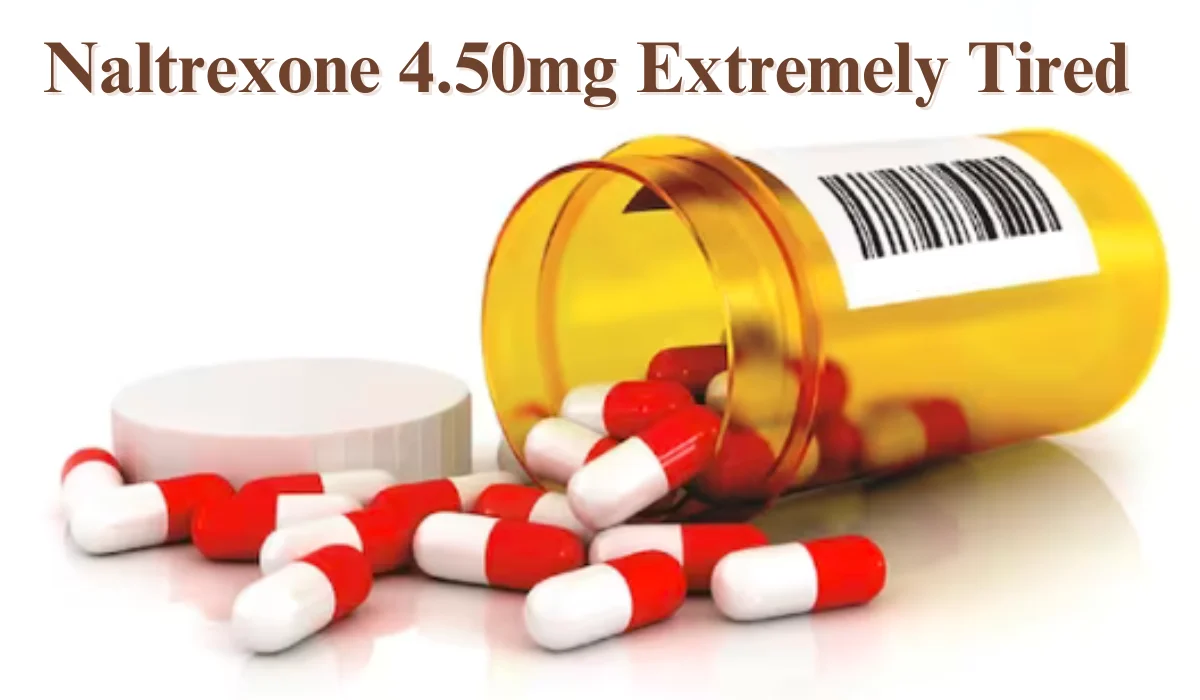Naltrexone 4.50 mg: Navigating Extreme Fatigue
naltrexone 4.50mg extremely tired, often associated with combating alcohol and opioid addiction, has become a critical part of many treatment plans. Typically administered at a dose of 4.50 mg, this medication helps reduce cravings and block the euphoric effects of drugs. However, like any prescription medication, it comes with potential side effects. One of the most commonly reported issues among users is fatigue. In this article, we’ll delve into the connection between Naltrexone 4.50 mg and extreme tiredness, exploring its benefits, possible drawbacks, and strategies for managing this side effect.
Understanding Naltrexone
Naltrexone is primarily used to support individuals in their recovery from addiction. By binding to opioid receptors in the brain, it prevents other opioids from attaching and producing their effects. For those struggling with alcohol dependence, Naltrexone can diminish the pleasure derived from drinking, which can help reduce overall consumption.
Benefits
Naltrexone offers several significant benefits:
Reduces Cravings: By interfering with the brain’s reward system, it can lessen the urge to use alcohol or opioids.
Prevents Relapse: For individuals in recovery, it provides a safeguard against returning to old habits.
Supports Long-Term Recovery: Its use can be a key component in a comprehensive treatment plan, aiding in long-term sobriety.
How It Works
Naltrexone operates by blocking opioid receptors in the brain, which in turn prevents opioids from exerting their effects. This can help manage addiction by making the use of opioids less rewarding. In the context of alcohol dependency, it alters the brain’s response to alcohol, making it less appealing.
Fatigue and Naltrexone
While Naltrexone is effective for many individuals, one of its notable side effects is fatigue. This can be a significant concern for users, as it impacts daily functioning and overall quality of life.
Causes
The exact cause of fatigue related to Naltrexone isn’t fully understood, but several factors might contribute:
Metabolic Changes: The body’s adjustment to the medication may lead to feelings of tiredness.
Neurochemical Impact: Naltrexone’s interaction with brain chemistry could potentially affect energy levels.
Sleep Disturbances: Changes in sleep patterns or quality can contribute to increased fatigue.
Symptoms
Individuals taking Naltrexone may experience:
Persistent Tiredness: A general feeling of exhaustion that doesn’t improve with rest.
Low Energy: Difficulty in performing routine tasks or maintaining usual activity levels.
Drowsiness: An overwhelming urge to sleep during the day.
Managing Extreme Fatigue
For those experiencing significant tiredness while on Naltrexone, several strategies can help alleviate this side effect.
Adjust Dosage
Consulting with a healthcare provider about adjusting the dosage might be an option. Sometimes, reducing the dose or altering the timing can help mitigate fatigue.
Lifestyle Adjustments
Incorporating healthy lifestyle changes can be beneficial:
Regular Exercise: Engaging in physical activity can boost energy levels and combat tiredness.
Balanced Diet: Consuming a nutritious diet can help maintain energy and overall health.
Adequate Sleep: Ensuring sufficient and quality sleep can improve daytime alertness.
Professional Support
Seeking advice from a healthcare provider is crucial. They can offer personalized recommendations based on individual needs and may provide additional treatments or therapies to manage fatigue.
Conclusion
Naltrexone 4.50 mg is a valuable tool in the treatment of addiction, helping to reduce cravings and prevent relapse. However, like any medication, it comes with potential side effects, including fatigue. Understanding this relationship is important for managing treatment effectively. By exploring the causes of fatigue and implementing appropriate strategies, individuals can better navigate their journey to recovery and improve their overall well-being.






